Moths
My moth collection has grown but it is the result of opportunism, rather than being built by my actually seeking out moths. I don’t set moth traps for the night flying moths and, thus, I am somewhat limited to day flying moths or any that we happen to spot resting, waiting for the hours of darkness.
I am a self-confessed moth numbskull who’s rubbish at identifying them. Thus, for many of these identifications I am indebted to our county moth recorders at the BNHS, iSpot and more recently iNaturalist. I have resorted to an accursed app [Obsidentify] for some help, too, but regard it with some suspicion.
Sequencing such collections drives me nuts. I used to follow that of the Concise Guide to the Moths of Great Britain and Ireland (Townsend/Waring), foreign species being shoehorned in, but I found it difficult deciding if I had a repeat or not. So, I now stick to going alphabetically by scientific name. That makes much more sense for foreign jobs, anyway.
| Agriopis leucophaearia |
Amasta phegea |
Amphipyra pyramidea |
.jpg) |
.jpg) |
.JPG) |
| Aplocera sp |
Archiearis parthenias |
Arctia caja |
.JPG) |
.jpg) |
.jpg) |
| Arctia villica |
Aspitates gilvaria |
Atteva aurera |
.JPG) |
.jpg) |
.jpg) |
| Autographa gamma |
Callimorpha dominula |
Callistege mi |
.jpg) |
.jpg) |
.JPG) |
| Calliteara pudibunda |
Calliteara pudibunda |
Calliteara pudibunda |
 female.JPG) |
.JPG) |
 caterpillar.JPG) |
| Camptogramma bilineata |
Catocala elocata |
Catocala nupta |
.JPG) |
-2.jpg) |
.JPG) |
| Chiasmia clathrata |
Chrysodeixis chalcites |
Colacasia coryli |
.JPG) |
.jpg) |
.JPG) |
| Colostigia pectinataria |
Colotois pennaria |
Conistra rubiginea |
.jpg) |
.JPG) |
.JPG) |
| Cucullia santolinae |
Cyligramma latona |
Cymbalophora pudica |
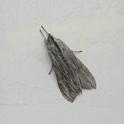 |
.jpg) |
.jpg) |
| Diacrisia sannio |
Ectropis bistortata |
Eilema griseola |
.JPG) |
.jpg) |
.JPG) |
| Eilema sororcula |
Ematurga atomaria |
Epirrhoe alternata |
.jpg) |
.JPG) |
.JPG) |
| Epirrita dilutata |
Eublemma parva |
Euclidia glyphica |
.JPG) |
.jpg) |
.JPG) |
| Euproctis similis |
Euthrix potatoria |
Grammodes stolida |
.JPG) |
.jpg) |
.jpg) |
| Gymnoscelis rufifasciata |
Hemaris fuciformis |
Hemithea aestivaria |
.JPG) |
.jpg) |
.jpg) |
| Hyloicus pinastri |
Hypena proboscidalis |
Idaea aversata |
.jpg) |
.JPG) |
.JPG) |
| Idaea filicata |
Idaea seriata |
Lomaspilis marginata |
.jpg) |
.jpg) |
.JPG) |
| Lymantria monacha |
Lymantria monacha |
Lythria cruentaria |
 female.JPG) |
 male.JPG) |
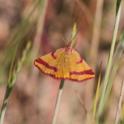 |
| Macroglossum stellatarum |
Mythimna unipunctata |
Noctua pronuba |
.JPG) |
.jpg) |
.JPG) |
| Ocnogyna clathrata |
Odezia atrata |
Operophtera brumata |
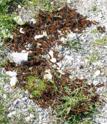 |
.JPG) |
.jpg) |
| Orgyia antiqua |
Panemeria tenebrata |
Panolis flammea |
.jpg) |
.jpg) |
.JPG) |
| Peribatodes ilicaria |
Peribatodes secundaria |
Perigune narbonea |
.jpg) |
.JPG) |
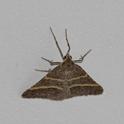 |
| Pheosia gnoma |
Phigalia pilosaria |
Pseudopanthera macularia |
.JPG) |
.jpg) |
.JPG) |
| Rivula sericealis |
Scopula marginepunctata |
Scotopteryx chenopodiata |
.JPG) |
.jpg) |
.jpg) |
| Selidosema taeniolaria |
Shargacucullia verbasci |
Siona lineata |
 |
 caterpillar.JPG) |
.jpg) |
| Spoledea recurvalis |
Synanthedon formicaeformis |
Thaumetopoea pityocampa |
.jpg) |
.JPG) |
 1.jpg) |
| Thaumetopoea pityocampa |
Timandra comae |
Tyria jacobaeae |
 2.jpg) |
.jpg) |
.JPG) |
| Tyria jacobaeae |
Xanthorhoe fluctuata |
Xanthorhoe montanata |
 caterpillar.JPG) |
.JPG) |
.JPG) |
| Zygaena fausta |
Zygaena filipendulae |
Zygaena loti |
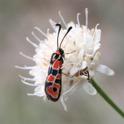 |
.jpg) |
 |
| Zygaena trifolii |
Zygaena romeo |
.jpg) |
 |
Micro Moths
Since most micro moths do not have common Names, alphabetical sequence on scientific name is pretty much the only option anyway.
| Adela reaumurella |
 |
| Agapeta hamana |
Agonopterix subpropinquella |
Alucita hexadactyla |
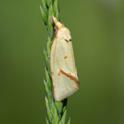 |
 |
 |
| Amblyptilia |
Anthophila fabriciana |
Diurnea fagella |
 |
 |
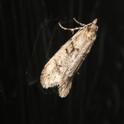 |
| Elophila nymphaeata |
Endotricha flammealis |
Grapholita jungiella |
 |
 |
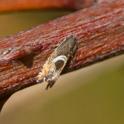 |
| Nymphula nitidulata (Beautiful China-mark) |
Tortricodes alternella |
Tortrix viridana (Green Oak Tortrix) |
.jpg) |
 |
.jpg) |
.jpg)
.jpg)
.JPG)
.JPG)
.jpg)
.jpg)
.JPG)
.jpg)
.jpg)
.jpg)
.jpg)
.JPG)
 female.JPG)
.JPG)
 caterpillar.JPG)
.JPG)
-2.jpg)
.JPG)
.JPG)
.jpg)
.JPG)
.jpg)
.JPG)
.JPG)

.jpg)
.jpg)
.JPG)
.jpg)
.JPG)
.jpg)
.JPG)
.JPG)
.JPG)
.jpg)
.JPG)
.JPG)
.jpg)
.jpg)
.JPG)
.jpg)
.jpg)
.jpg)
.JPG)
.JPG)
.jpg)
.jpg)
.JPG)
 female.JPG)
 male.JPG)

.JPG)
.jpg)
.JPG)

.JPG)
.jpg)
.jpg)
.jpg)
.JPG)
.jpg)
.JPG)

.JPG)
.jpg)
.JPG)
.JPG)
.jpg)
.jpg)

 caterpillar.JPG)
.jpg)
.jpg)
.JPG)
 1.jpg)
 2.jpg)
.jpg)
.JPG)
 caterpillar.JPG)
.JPG)
.JPG)

.jpg)

.jpg)











.jpg)

.jpg)

Leave a Reply